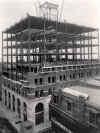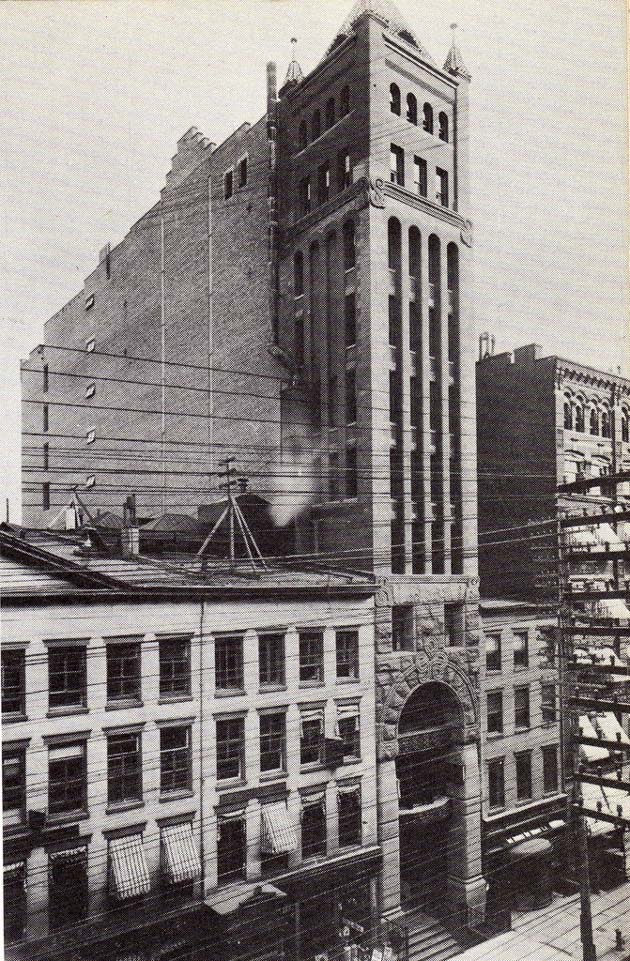 |
New York
Architecture Images- Gone THE TOWER BUILDING |
|
architect |
Bradford Lee Gilbert |
|
location |
50 Broadway |
|
date |
1888 |
|
style |
Beaux-Arts |
|
construction |
|
|
type |
Office Building |
|
|
|
|
images |
   |
|
|
 |
|
notes |
The year the
Lincoln Building was completed in 1888, an architect named Bradford Gilbert
designed the Tower Building on Broadway, just north of Bowling Green. This
building is on an exceptionally narrow plot of land. So narrow that if they
had constructed the building more than about four stories, as it went higher
and higher, the walls would have been getting thicker and thicker and there
would have been no ground floor left because the walls would have had to
support the weight of each additional floor, so it would have been
prohibitively expensive to build anything more than about four or five
stories. So Bradford Gilbert proposed a building with a steel-skeleton frame, which would support the weight of the building and keep the walls from being thick. This was a radically new idea and a lot of people were opposed to it because they did not think the building would stand up. Bradford Gilbert needed to persuade the New York City buildings department to give him a permit to build because the building's department was a little wary of this new technology. But Gilbert persuaded them that this building was going to stand up by making models of the building to show how it would withstand weight and wind pressure. He built this structure between 1888 and 1889 and it is now thought to be the first building in the world with a steel-skeleton frame. The steel-skeleton frame was the second necessity for tall buildings. First you had the elevator and then you had the skeleton-frame construction. The nineteenth-century architecture critic Barr Ferree wrote: If the high building would be impossible without the elevator, it would be equally impossible without a mode of construction that would enable it to be built on a lot practically of any size, and without absorbing too much of the area for foundations and supports. This is accomplished by the steel-skeleton system of construction, now almost exclusively used for commercial buildings of great height, and which has the double advantage of saving floor space and of being above the height of an ordinary structure absolutely less costly than a construction wholly of brick or stone.He wrote this in 1894, which was only five years after the Tower Building had been completed. The Tower Building was so novel and its engineering idea was so spectacular that it was picked up almost immediately by the developers of tall buildings |